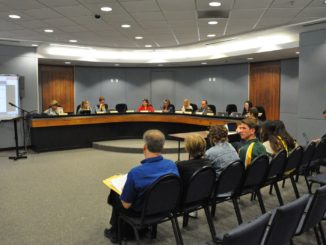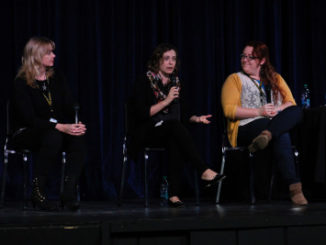
By Tommy Kelleher
Staff Writer
On the website for Common Core State Standards, there is a handy section of myths vs. facts about Common Core. One of these myths is that it is a curriculum, where it is simply a set of goals and a new approach to mathematics. MBUSD must not treat it like a new curriculum.
Common Core State Standards were developed starting in 2009 by state leaders and educators, and were adopted by the state of California in 2010. The idea behind the standards is to increase the depth of student knowledge as well as standardize the curriculum between schools. California has also adopted the Smarter Balanced Assessment System to ensure that schools are meeting the standards.
A year ago, MBUSD formed a mathematics committee to address the changes in teaching which Common Core necessitates. Four Costa math teachers—Linda Gesualdi, Timothy Kelley, Bharathi Singh and Jason Robertson—are members of the committee, and have attended meetings during their class time in order to help revise the school’s curriculum. In the future, the committee and the district must focus on gradual changes instead of large impulsive ones.
Common Core is not revolutionary; it is a culmination of preexistent ideas. On the Common Core website, the ideas behind Common Core are credited to a variety of teachers and scholars, but the most fundamental goals—improving understanding of mathematical concepts and making math appear more applicable to life—are obvious. The new standards are meant to provide a guideline for schools like Costa, not instructions for rebuilding the most basic aspects of the math curriculum.
Yet the board still finds a need to spend more money on textbooks, which they want to buy for the 2016-2017 school year. Before textbooks, the school must try to adjust to the test simply through changes in teaching. According to MBUSD Executive Director of Educational Services Brett Geithman, many neighboring schools have been unhappy with their decisions in textbooks. The focus on textbooks does not make sense, given the immediacy of testing and the possibility of imprudently spending money.
Math teachers need to begin to address Common Core starting now. This change should entail a larger focus on explanations behind mathematical methods and more approaches to solving the same problem—the basic principles behind the shift to common core.
Instead, some teachers have adopted new teaching methods that seem to address Common Core, but actually only impede on learning. In some classes, students work in groups rather than being lectured. The idea behind this is that students learn more when they teach themselves. Though perhaps this is true in some cases, a more guided process is far more efficient.
The board has adopted Cognitively Guided Instruction—a process by which teachers are taught new approaches to help students understand mathematical concepts—as a way of addressing Common Core. This will require up to 120 days of staff development using a partnership with UCLA.
Though the ideas behind CGI are well intentioned, the process is not meant for a school like Mira Costa. CGI treats Common Core as revolutionary, where a gradual evolution from the current methodology would make more sense for a school with high scores and an already successful math program.
In addition, students must have a better understanding of the test itself. The questions are unique to the new test, but the curriculum itself is not. Even with new textbooks and a restructured curriculum, students have to know how to approach the test itself, or all of the other preparation is useless.
To address Common Core, the district should view it not as a complete change of how math is taught, but a friendly reminder not to lose sight of the goals behind teaching: comprehension and empowerment.




Leave a Reply